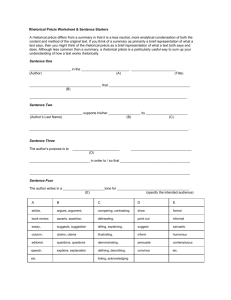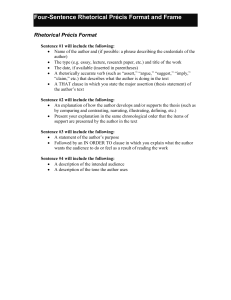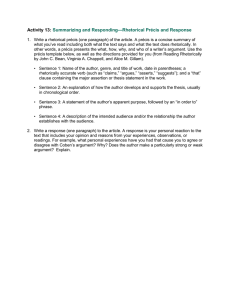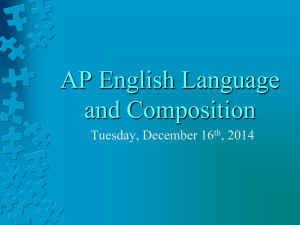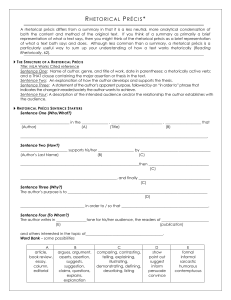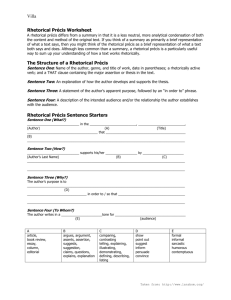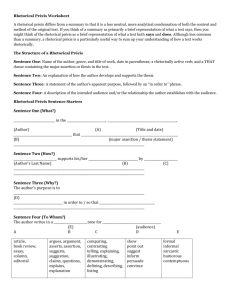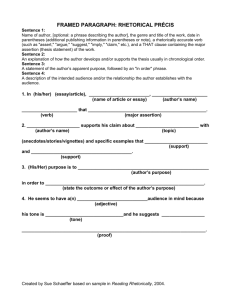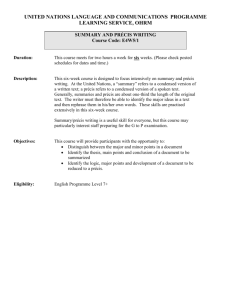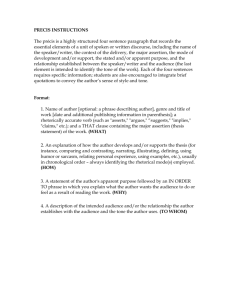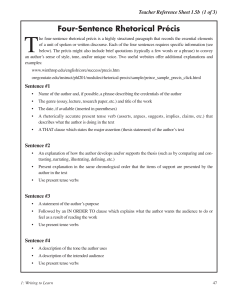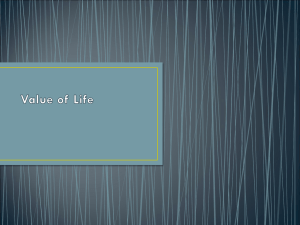Schrader/Zeman 2015-2016 English III
advertisement
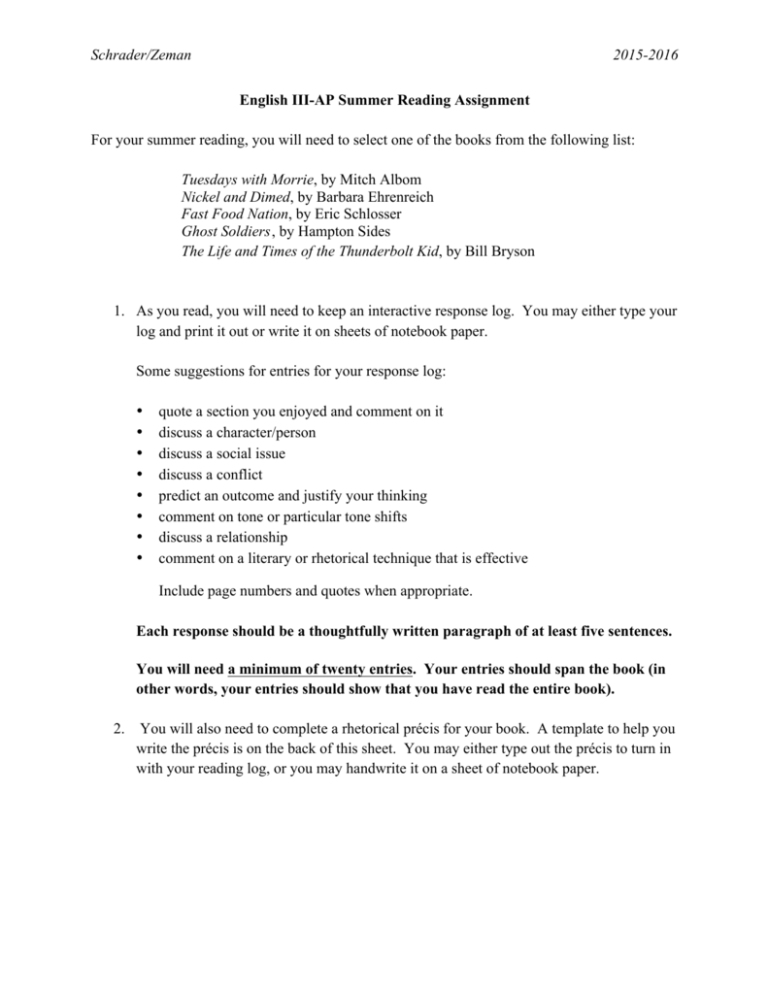
Schrader/Zeman 2015-2016 English III-AP Summer Reading Assignment For your summer reading, you will need to select one of the books from the following list: Tuesdays with Morrie, by Mitch Albom Nickel and Dimed, by Barbara Ehrenreich Fast Food Nation, by Eric Schlosser Ghost Soldiers , by Hampton Sides The Life and Times of the Thunderbolt Kid, by Bill Bryson 1. As you read, you will need to keep an interactive response log. You may either type your log and print it out or write it on sheets of notebook paper. Some suggestions for entries for your response log: • • • • • • • • quote a section you enjoyed and comment on it discuss a character/person discuss a social issue discuss a conflict predict an outcome and justify your thinking comment on tone or particular tone shifts discuss a relationship comment on a literary or rhetorical technique that is effective Include page numbers and quotes when appropriate. Each response should be a thoughtfully written paragraph of at least five sentences. You will need a minimum of twenty entries. Your entries should span the book (in other words, your entries should show that you have read the entire book). 2. You will also need to complete a rhetorical précis for your book. A template to help you write the précis is on the back of this sheet. You may either type out the précis to turn in with your reading log, or you may handwrite it on a sheet of notebook paper. Schrader/Zeman 2015-2016 The Rhetorical Précis Your précis should be made up of four sentences: 1. Name of author, (optional: a phrase describing author), category and title of work, date in parentheses; a rhetorically accurate verb (such as “asserts”, “argues”, “suggests”, “implies”, “claims”); and a THAT clause containing major assertion (thesis statement or “promise” sentence) of the work. 2. An explanation of how the author develops and/or supports the thesis, usually in chronological order. Think in terms of patterns of development (does the writer use narration? Description? Cause and effect reasoning? Definition? Comparison and contrast?, etc.), how the text is arranged , and the appeals to logic, emotion, and credibility. 3. A statement of the author’s apparent purpose. 4. A description of the intended audience and the relationship the author establishes with the audience. In his/her ____________________________ (type/genre of writing), _______________________ ________________________________(title of piece), ____________________________ (author) observes (can substitute another rhetorically accurate verb) that ___________________________________________________________________________ _______________________________________________________________________________ (major assertion). S/he illustrates this by _____________________________________________ (indicate how the author develops his/her assertion—but don’t go into detailed explanation here). ___________________ ‘s (author’s name) purpose is to __________________________________. S/he writes with ___________________(describe tone of writing) to ________________________ (describe the intended audience) to ____________________________________________(explain the relationship established with the audience and his purpose).
